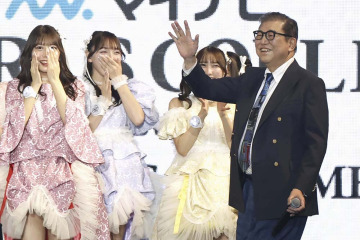The Woman Who Left (Ang Babaeng Humayo)
228 minutes, Philippines, 2017
Reviewed by Arturo Arredondo
Pinoy filmmaker Lav Diaz might be best known in film circles for his prominence in slow cinema; he has even made some of the longest narrative films in movie history. His Evolution of a Filipino Family from 2004 carries a runtime of 10 hours and 43 minutes, 2008’s Melancholia clocks in at 7 and a half hours, while his 2013 opus Norte, the End of History is 4 hours and 10 minutes long. The Woman Who Left is his shortest film — only 3 hours and 48 minutes — and is also Lav Diaz at perhaps his most accessible (hinted by the starring roles by media executive Charo Santos-Concio and TV mainstay John Lloyd Cruz). What’s most remarkable, however, is that he produced, wrote, directed, and shot the film by himself.
Horacia Somorostro (Santos-Concio) is released from prison for a crime she didn’t commit. Back on the outside, Horacia discovers her husband has passed away and her son is missing, but manages to reconnect with her daughter Minerva although it’s an uneasy relationship. When Horacia learns that her ex-boyfriend, Rodrigo Trinidad, a rich playboy living comfortably in his compound but almost never leaving due to fears of being kidnapped and held for ransom, Horacia begins to stalk Rodrigo’s movements and plan her revenge.
Clearly taking influence, like much of Lav Diaz’s oeuvre, from the works of Fyodor Dostoyevsky and Leo Tolstoy, The Woman Who Left is very loosely inspired by Tolstoy’s short story “God Sees the Truth, but Waits” about a man falsely imprisoned and how he grapples with the injustice and his fate. Echoing Tolstoy, Diaz tackles numerous social and political problems in one go, although that is not to say this film or any of his others are bloated thematically. Every topic is approached with subtlety, sometimes through overheard radio chatter, often in the looks Horacia gives to the people and setting around her.
The great film critic Roger Ebert once summarized the value in a film as being in not just what it’s about, but how it’s about it. The Woman Who Left is a revenge epic, but how is it about revenge? By exploring Horacia’s shifting beliefs regarding family and forgiveness. More than anything, The Woman Who Left is a movie about the numerous questions its characters ask: “Are you really fair and just?” “Why can’t I fight this hell within me?” “Why does evil always overcome my soul?” None of these are answered immediately, as the characters’ journeys are what provide the responses.
Upon Horacia’s release from prison, she struggles to stand on her own two feet again. Given the natural tension that her 30-year absence and wildly different conception of justice have caused between herself and her daughter, Horacia’s desire to care and nurture is juxtaposed by her implicitly cruel plans for Rodrigo when she finally nails him. However, things begin to change when Horacia encounters the three people who will become her companions: a hunchbacked street food vendor selling balut, an epileptic transgender sex worker prone to fits of drunken dancing before her seizures, and a young homeless woman who sees demons everywhere due to mental illness. While they are at first merely useful to Horacia as unwitting informants, her growth into their caregivers, despite still being set on her vengeful mission, is at the heart of this morality play.
The stark black and white cinematography by Diaz is mostly still. Considering the film’s nearly 4-hour runtime, the camerawork elicits an incredible sense of urgency and intimacy because of how Diaz worked. Characters conversate in static shots with no reaction shots. Even when there is a character moving, there is no tracking shot or pan or tilt; like Horacia, the camera lies in ambush, simply observing. I wouldn’t call the film’s pacing languid, necessarily. It is, as Gil Quinto describes in his marvelous essay (included with the Kino Lorber disc) on the film “Visions from the Abyss” a “free-form” narrative. The nighttime photography is wondrous, and luckily there are almost as many scenes at night as there are during the day and for the former, the chiaroscuro approach results in striking shot compositions.
The soundtrack and score are practically nonexistent. Random birds during the day and crickets at night, but this is a film where songs act as cues for emotion. I am usually loath to use the phrase, “it’s not a film for everybody” because I think everybody with the use of all their senses should be able to apply themselves to be immersed into a film such as this, however, the minimalism of the film will likely be a problem if you’re one of those people who dismisses terms like “contemplative” or “deliberate pacing” and prefer things to happen in the movies you watch. Truthfully, not much that could typically be described as “conflict” or “action” happens for most of the film besides conversations, but to evoke Roger Ebert again, what those conversations are about is one thing, how those conversations unfold is another matter entirely. Sometimes, stories transcend their trappings. Sometimes, people can, too.
Ratings: 4.5/5
















